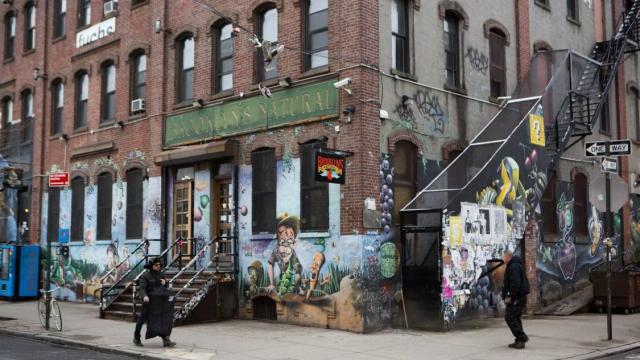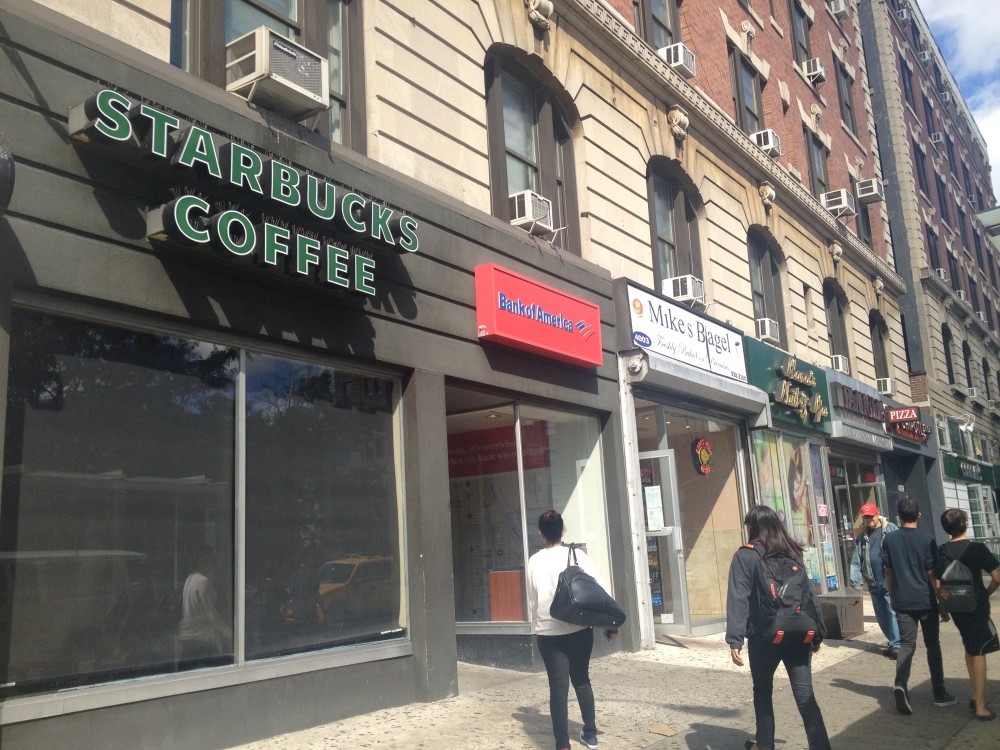
Rising rents in cities across the nation are hurting the poorest residents, but those who are higher on the income ladder might be bearing the brunt of the pain.
A study released on Monday shows that a far bigger proportion of middle-class renters in New York were squeezed by rising rents than were the lowest-income renters.
The study by New York University’s Furman Center examined rapidly gentrifying neighborhoods such as Brooklyn’s Williamsburg section and Harlem, where rents jumped 80% and 53%, respectively, between 1990 and 2014. While the share of the poorest families struggling to afford rent in those sections increased by 7.6 percentage points from 2000 to 2014, the share of middle-income households struggling to afford rent jumped 18 percentage points.
One main reason for the disconnect, the authors suggest, is that many of the poorest residents live in public housing or receive rental subsidies for which middle-income households don’t qualify. They might also be more likely to leave neighborhoods altogether when rents rise.
“We focus so much on the poor and the displacement of the poor. Maybe in a lot of these neighborhoods … it’s moderate-income households that are more vulnerable,” said Ingrid Gould Ellen, faculty director at the Furman Center.
Gentrification has accelerated across the U.S. over the past decade. The share of less-affluent neighborhoods seeing large rent gains shot up to 25% from 2000 to 2014 from 10% between 1990 and 2000, according to a separate Furman Center study.
In Boston, median asking rents have increased at an annual rate of 13.2% since 2010, far outstripping the 2.4% average annual increase in income. Mayor Marty Walsh has pledged to build 20,000 units of middle-income housing through a mix of initiatives such as rezoning neighborhoods further from the city center and offering tax breaks to developers who build more moderately priced housing.
“We really do spend the vast majority of our resources on low-income families but we know we need to serve the middle income,” said Sheila Dillon, Boston’s chief of housing.
Even in Atlanta, historically one of the most affordable cities for middle-class families, a rapid rise in rents has taken its toll on those families. The city last week passed a new ordinance requiring developers who receive tax breaks to set aside a portion of units aimed at lower-income earners. It is also considering requiring developers to include units targeted at slightly more affluent families, such as teachers and police officers.
“We’re not the little city in the south anymore. It’s much more expensive, especially the rental market,” said Valerie Bernardo, director of housing for the city of Atlanta.
In New York neighborhoods like Bedford-Stuyvesant, historically a middle-class African-American section of Brooklyn, many of the grand brownstones lining the streets have fallen into disrepair over time. Now those homes are prime targets for investors and young professionals.
One renovated five-bedroom townhouse in the neighborhood is on the market for $2.995 million, according to Morgan Munsey, a local real-estate broker. Mr. Munsey recalls that six years ago he scoffed when people started listing brownstones for $800,000.
“You’re starting to get some of the hedge fund-types,” he said, “but they’re friendly.”
New York City has pledged to build or preserve 44,000 units for middle-income families over the next decade. Low-income households “have been straining to pay their rents in these neighborhoods for years, and, as rents continue to rise, households in higher-income tiers are having the same experience,” said a spokeswoman for New York City’s Housing Preservation and Development Department.
The Furman Center study uses the definition of families who are rent burdened as those that must spend more than 30% of their incomes on rent, a level that federal guidelines say is financially sustainable.
The report looked at three groups of renters: the poorest, earning less than $41,950 a year for a family of four; lower-income renters making between $41,950 and $67,100 a year; and middle-income renters making up to $100,680 for a four-person household. The share of rent-burdened residents increased by 7.6 percentage points, 21 points and 18 points, respectively, for the three groups between 2000 and 2014.
Doris Rowley-Hoyte, 63, has lived in Bedford-Stuyvesant for most of the past four decades. But rising rents prompted her last week to move to a new apartment much deeper into Brooklyn, where she pays $1,400 a month.
Ms. Rowley-Hoyte was forced out of an $1,800-a-month apartment she split with her two children when they moved out, and it was difficult to find a place on her own that was affordable on her salary of about $60,000, she said. Many new buildings in the area boast a few units earmarked for lower-income tenants and many more aimed at affluent renters, with little in between, she said.
“I don’t mind the idea of new people coming in, but I mind them pushing me out,” she said.
3 WAYS TO SHOW YOUR SUPPORT
- Log in to post comments















Comments
besleprero replied on
gdfsgf
I get paid £96 every hour from online jobs. I never thought I'd be able to do it but my friend AH is earning £10k /monthly by doing this job and she showed me how. Try it out on following website..U3..
====== www.PayAbility.TK